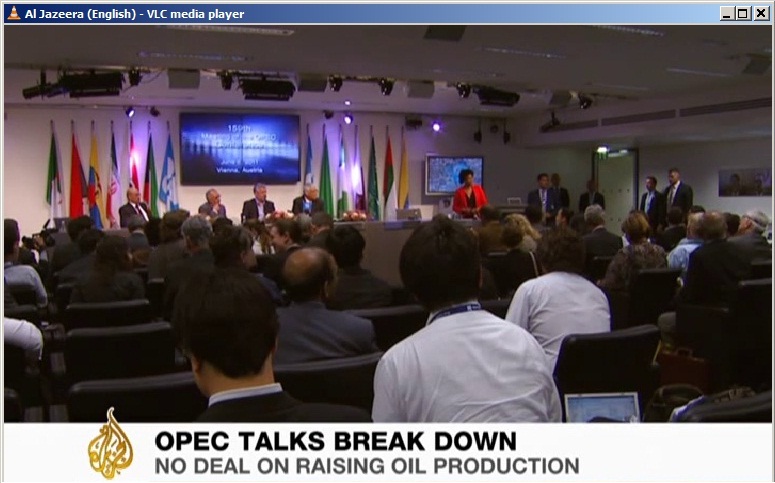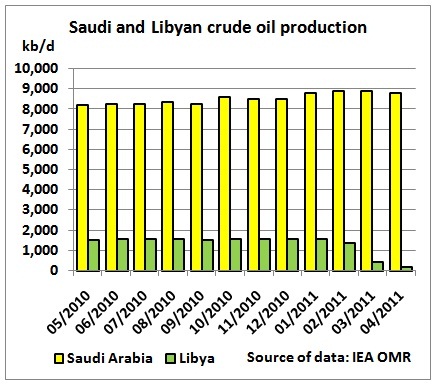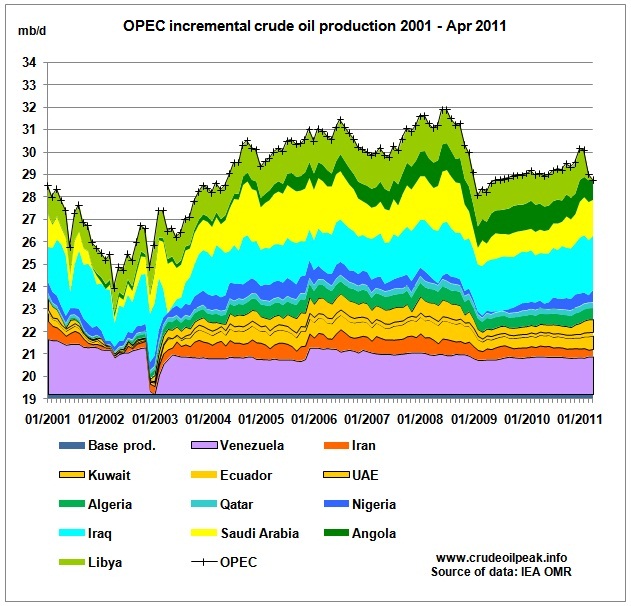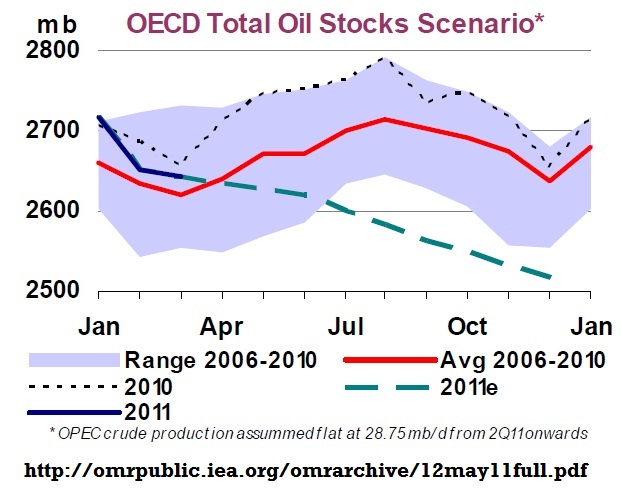A meeting of oil ministers in Vienna broke up unexpectedly without an agreement to raise production. OPEC’s president said some members wanted three months to consider the issue.
Iran, Venezuela and Algeria refused to consider a production increase, a delegate in Vienna told CNBC. Saudi Arabia already plans to increase production, according to reports yesterday, and it’s possible other OPEC members didn’t feel the need to join them.
Saudi oil minister Ali Al-Naimi just told Bloomberg TV that this was one of the worst OPEC meetings he’s ever seen. This could be an echo of the age of dissent and revolutions throughout the Middle East, currency analyst Ashraf Laidi said on Twitter.
http://blogs.wsj.com/marketbeat/2011/06/08/opec-keeps-oil-production-unchanged/?mod=google_news_blog
http://english.aljazeera.net/news/europe/2011/06/201168123819705145.html
Here are some hard facts. Saudi Arabia did not increase production in February – April 2011 to compensate for Libyan oil production losses.
Here are the incremental crude oil graphs for OPEC, using data from the Monthly Oil Market Report of the IEA (International Energy Agency) in Paris.
We can clearly see what I call the Oilympic peak in July 2008 with an additional 800 kb/d from Saudi Arabia for China. Since then, OPEC production has dropped, for various reasons, by around 3 mb/d while demand, despite the temporary drop during the GFC, has remained strong.
Note that these are incremental changes since January 2001. The base production is the sum of the lowest country production data in this period. Countries with huge fluctuations like Venezuela, Iraq and now Libya feature prominently. Saudi Arabia is supposed to be a swing producer. But compare the recent slow rise in Saudi production with the fast incremental supply surge during the Iraq war.
In the meantime, OECD is living on stock withdrawls to keep oil prices down.
The total estimated by the IEA is around 200 mb pa or an average of 550 kb/d compared to a total OECD demand of 46 mb/d.
.




